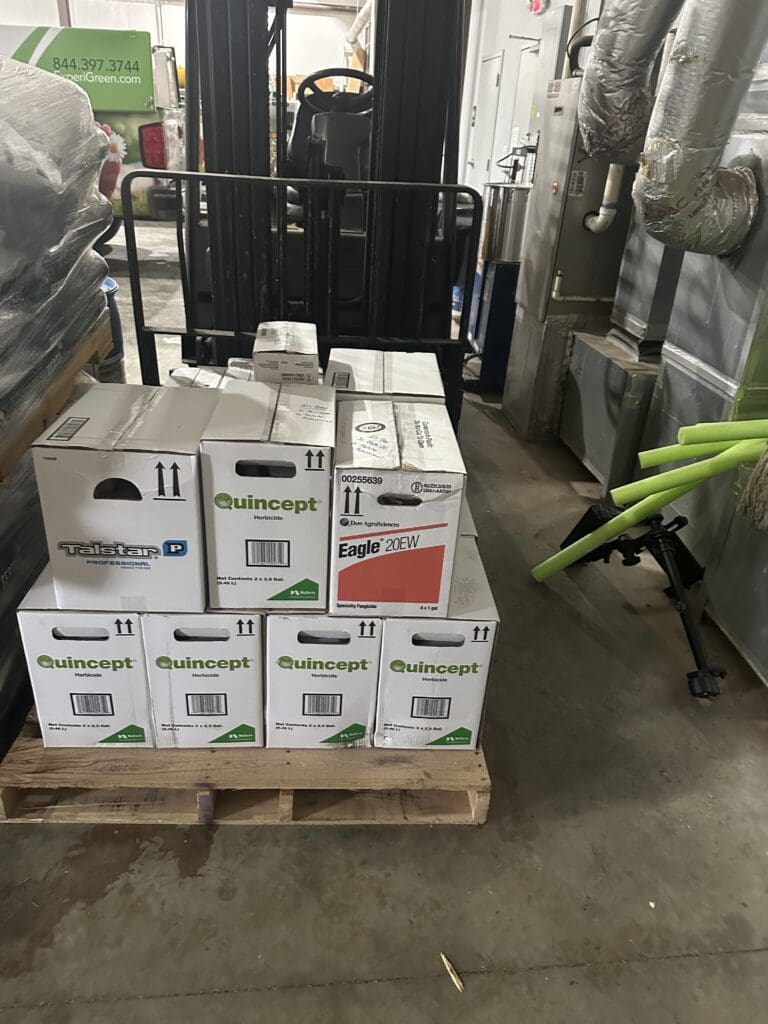
Early ordering can allow your lawn care business to have the products you need on hand before the season starts and offers savings as well. However, determining if these programs are viable for your company, as well as how much to order before the season, will depend on a number of factors.
Who Should Early Order
Dana Irwin, vice president of operations and COO of ExperiGreen Lawn Care, based in Mishawaka, Indiana, says it’s up to each company’s owner if early order programs make sense to them but he says a business with $1 million or more in annual revenue would benefit from an early order program.
“A company needs to be around 3 million square feet of turf to start to take advantage of the opportunities,” says Josh Wise, CEO of GrassRoots Tree and Turf Care Inc., based in Acworth, Georgia. “Some manufacturers’ programs will require more than that amount, while other manufacturers will qualify for some savings. The more north of that square footage, the more EOP advantages kick in for companies.”

Kevin Laycock, director of category management for SiteOne Landscape Supply, says that he sees the most participation in early order programs from medium to large-sized companies but this doesn’t mean there aren’t opportunities for smaller organizations to participate in these programs.
“It’s evolved over the years where early order programs now have features in their program that will benefit customers of all sizes,” Laycock says.
Aside from being the right size, Wise says you need to be confident in your turf program’s ability to make customers happy.
“Once they have established this, they can confidently order their program products well in advance, knowing they will work and they will not be changing,” Wise says.
Laycock says that whether early ordering is a good fit for your company depends on your risk appetite, where you are in your business’s growth and how much stability you have with your customers.
“If you feel like you have a pretty solid foundation of customers and you don’t have a bunch of churn with customers, you have a pretty high level of competence going into the next year,” Laycock says. “You know what your needs are going to be.”
Chase Coates, owner of Outback Landscape, based in Idaho Falls, Idaho, says that if you have a good foundation of customers and accurate measurements, there’s not a lot of risk to early ordering.
Once you have a base level of business you know you’re going to have each year, then you can start taking advantage of the offers and savings associated with EOPs.
Coates says if the savings outweigh the costs and you can afford to write that check if you need to, it’s worth participating in.
What to Order Early
Laycock advises ordering the products you need to provide the best service to your customers and reduce callbacks. Coates says it’s not worth ordering certain materials early if there isn’t a lot of savings and it’s more of a hassle to store.
Irwin says he tries to take advantage of all early order programs as long as they use that specific product at certain volume levels.
“We EOP around 75% of our turf program products and then add a couple of other opportunities from our beneficial services,” Wise says. “We are dependent on what products the manufacturers choose to EOP each year. Also, fertilizers and soil biology products are not included in EOP.”
One nuance of early ordering is threading the needle of ordering the right amount of product that will be used and being able to pay for those materials.
Laycock doesn’t advise purchasing beyond the payment term window because you will then be paying for material you haven’t used yet. Coates agrees you shouldn’t try to order a whole year’s worth of chemicals as you have to store them for months.
However, Wise says if his calculations are correct, the quantity of products ordered will take him through the whole year. He says additional orders are always taking place for products not ordered early as the year goes on.
Irwin says for them, it depends on how much product they’ll order. Typically, they’ll order enough for one to two rounds, but sometimes, with liquids, they’ll order enough for the whole year.
“Fertilizer takes up significant warehouse space, so it can be a challenge to have enough storage space,” Irwin says. “Some vendors will let you place an early order and store it for you and then deliver on a set schedule or on demand.”
Laycock says that there are lots of resources available from distributors to help calculate how far a product will go depending on the use rate. He encourages utilizing these tools so you don’t put yourself in an adverse situation and buy too much of a certain product.
“I look at the total number of customers scheduled for the service that the particular product is used for,” Irwin says. “Then I determine the total square footage to be serviced. In the case of a 50 lb. bag of fertilizer, first determine the number of square feet each bag will cover. Divide the total square feet by the coverage per bag to determine the number of bags to order. Then, determine how many bags a typical trailer or van can carry to determine the number of truckloads you will need.”
Wise says he adds up the total square footage of each grass type and forecasts expected growth for the coming year to calculate the total size.
“The total square foot and the mix rate for each product will be used to determine the EOP order amounts,” Wise says.
Coates says he doesn’t buy material based on additional customers they hope to sell as he doesn’t want to get stuck with extra material that can only be applied during a certain window.
Advice for Others
If you’ve never done early ordering before, Laycock suggests starting small with a core category from your business and growing it from there as you become more comfortable with EOPs.
“Start by familiarizing yourself with the rules of each manufacturer’s programs,” Wise says. “Also, get to know the products they offer and get your feet wet by participating with a few opportunities until you feel comfortable going all in.”
Make sure whatever program you’re considering is actually worth your time. Coates says if you’re only going to save $500, it’s probably not worth it.
“Don’t get yourself into a situation where you have to pay for it upfront and sit on all of it,” Coates says.
Coates adds you shouldn’t price your services based on the money you’ve saved with early order programs.
“If you can go save some money on the back end, great,” Coates says. “That’s a bonus. Don’t lower your prices because you got a good deal on some chemicals. Keep that baseline.”
Irwin encourages taking advantage of all the programs if they make sense for your business.
“The savings can add up and have a positive material impact on your cost of doing business and servicing your customers,” Irwin says. “With the increase of all input costs (products in particular) over the last few years, it makes sense to take advantage of these early order programs.”


